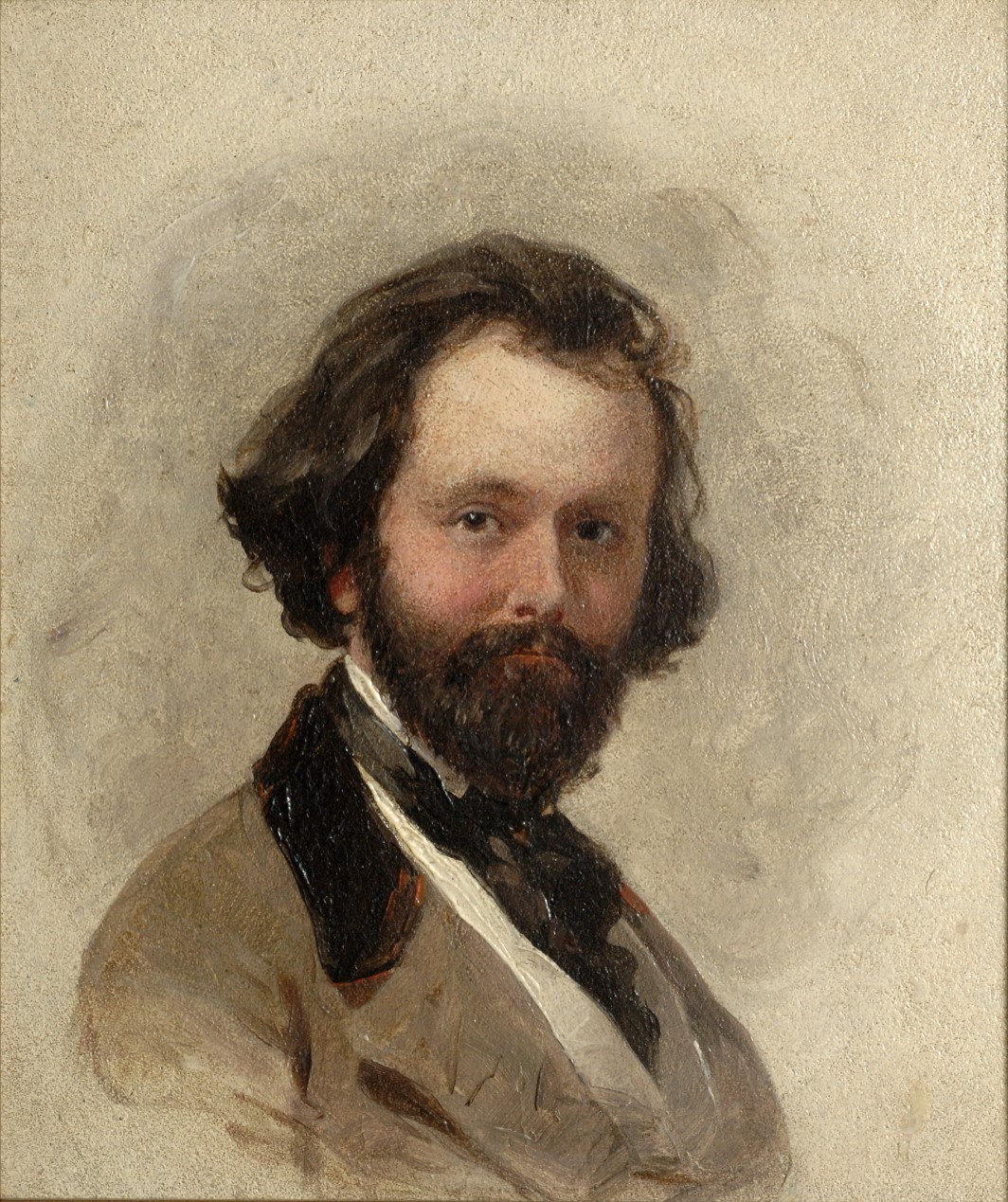Charles Loring Elliott (1812-1868) was a prolific portrait painter from Central New York. Born in Scipio, NY, Elliott spent most of his childhood in Syracuse, where his father was an architect and building contractor. Elliott devoted his childhood leisure to sketching and experimenting with oil paint, while occasionally making architectural drawings for his father. Shortly after his high school graduation, Elliott traveled to New York to study painting with John Trumbull, popular painter and president of the New York Academy of Fine Arts. Elliott did not enjoy Trumbull’s teaching style, and so he sought out John Quidor, a figure painter residing in New York, who proceeded to give Elliott the only formal training of his career.
After less than two years in the city, Elliott returned home to Central New York in 1834. He spent the next decade working as an itinerant portrait painter, likely supplementing his income by also decorating coaches, sleighs, and tavern signs. In the 1840s, he began to gain recognition as a talented portraitist, with notable Syracuse, Rochester, and Auburn residents commissioning him to capture their likenesses. By 1845, Elliott returned to New York City and quickly established himself as one of the leading portrait painters in the country. His style depended on a meticulous observation of his models, which allowed him to capture their individual characteristics with constant accuracy and naturalism. The colorful freshness and pleasing clarity of his work surpassed any competitors of his time.
Elliott’s first major success was a portrait of fellow artist and friend Sanford Thayer, painted in 1845. His treatment of Thayer’s golden beard, which English critics wrote, “seemed to possess the splendor of the setting sun,” showed Elliott’s unrivaled ability as a painter. The portrait helped gain Elliott acceptance into the National Academy of Design, and led to a stream of other portrait commissions. Ultimately, Elliott produced over 700 portraits in his career. He painted countless members of the Hamilton College faculty, many prominent residents of Central New York, an innumerable amount of government officials and Washington businessmen, five New York State Governors, and numerous members of the Vanderbilt family. In the 1860s, Elliott received so many commissions from people living in Albany that he ultimately moved there for the remainder of his life.
Elliott painted Self Portrait in 1834 at the age of twenty-two during his days as a traveling painter. It is his earliest known self portrait, and the small size is likely due to Elliott’s lack of disposable income and nomadic lifestyle in the 1830s. He did not have the extra financial resources to invest on a larger painting that would not result in income, and carrying large works from town to town as he traveled throughout Central New York would have been difficult.
Self Portrait is currently on display in Highlights from the Permanent Collection, on view through August 4, 2019.
-Michael Brussel, Curatorial Intern and Steffi Chappell, Curatorial Assistant


